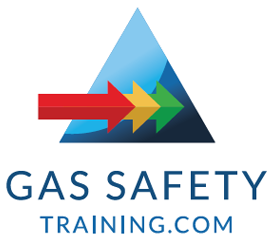Please select whether you require training for a commercial organization or a university, college or high school.
Liquid nitrogen handling and safety training is vital to keep everyone safe from harm.
It should be documented so it can be evidenced who received the training and when.
Our online learning is a simple way to provide cost effective certificated training to employees in the workplace, educators, students and medical staff.
Liquid Nitrogen Training FAQs
- What is liquid nitrogen training?
- Is liquid nitrogen training a legal requirement?
- Do students need to be trained to handle and use liquid nitrogen?
- What precautions should be taken when working with liquid nitrogen?
- What PPE is needed for liquid nitrogen?
- Should you wear gloves when handling liquid nitrogen?
- Can you handle liquid nitrogen alone?
- Can liquid nitrogen explode?
- Is liquid nitrogen safe to breathe / is liquid nitrogen toxic to humans?
- What happens if liquid nitrogen touches skin?
What is liquid nitrogen training?
Liquid nitrogen training is the process of providing an individual with information and instruction to enable them to use and handle liquid nitrogen safely. This knowledge, together with the necessary experience and capability, enables them to become competent to use liquid nitrogen and associated equipment.
Is liquid nitrogen training a legal requirement?
In most developed countries it’s a legal requirement for employers to provide training to employees relating to the job they do and to establish their competency. This is to keep the employee safe, plus anyone they may come into contact with such as colleagues and members of the public. Refresher training should be provided as required and/or set out in law to ensure the employee remains safe and competent.
Do students need to be trained to handle and use liquid nitrogen?
In most developed countries the requirement to provide training extends to all individuals in the care of an organization, for example students who are not employed by the organization but for whom they have a legal responsibility and duty of care.
What precautions should be taken when working with liquid nitrogen?
There are many precautions needed to handle and use liquid nitrogen safely. The provision of high quality professional training will ensure individuals are aware of them. The training will cover topics including appropriate Personal Protective Equipment (PPE) and the need to use liquid nitrogen in well ventilated spaces.
What PPE is needed for liquid nitrogen?
A Risk Assessment should be conducted by a competent person to determine the appropriate PPE required for the task(s) being carried out. As a minimum, protection for the eyes, hands and feet is needed. Your body should be covered by appropriate clothing with no exposed skin. The Risk Assessment may also dictate that protection for the face is required and for the body by wearing a cryogenic apron.
Should you wear gloves when handling liquid nitrogen?
Yes, hand protection is essential when handling liquid nitrogen. Appropriate cryogenic gloves will provide thermal insulation and prevent cold burns from splashing or spilling liquid while still allowing sufficient dexterity.
Can you handle liquid nitrogen alone?
Working with liquid nitrogen alone and/or out of hours should be avoided as many incidents and fatalities have resulted from lone working. If it cannot be avoided a Lone Worker Risk Assessment must be undertaken and the necessary control measures put into place before any lone working begins.
Can liquid nitrogen explode?
Liquid nitrogen itself cannot explode however, as it vaporizes it expands with a ratio approaching 1 to 700. This means that if it is stored in an unvented container not designed for liquid nitrogen use the gas produced as the liquid warms up can generate pressure very quickly and cause the container to explode.
Is liquid nitrogen safe to breathe / is liquid nitrogen toxic to humans?
Liquid nitrogen turns into gas at a rate of just under 1 to 700. This means that one volume of liquid nitrogen produces nearly 700 volumes of gaseous nitrogen, which can very quickly displace oxygen in a room and cause a hazardous, even fatal, situation. Therefore, the vapor from liquid nitrogen is only safe to breathe if it has been allowed to mix with the correct amount of oxygen to create a safe atmosphere.
What happens if liquid nitrogen touches skin?
Liquid nitrogen coming into contact with skin will cause burns, blistering and frostbite. This will happen within seconds of exposure. It can also cause permanent eye damage.
What our customers say
“I thought your online workshop was excellent, very informative, easy to use and I have learned a great deal. It’s very easy to access and to pick up and work through as and when time suits.”





